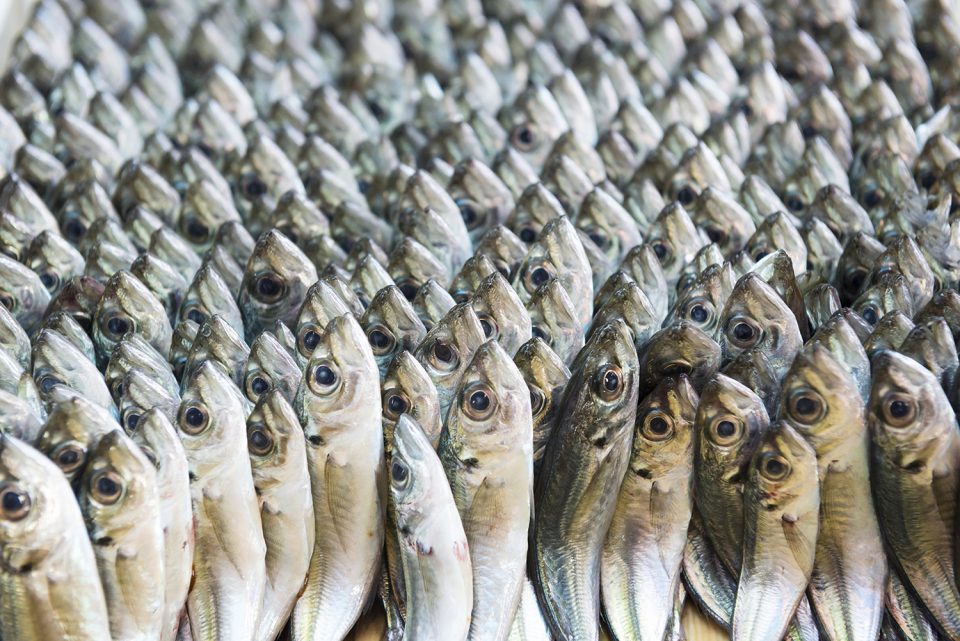With species substitution being exacerbated by the COVID-19 pandemic, new technology is at our fingertips

When LeeAnn Applewhite started running DNA analysis on commercial seafood samples in 2015, 75 percent of them – species ranging from grouper and snapper to catfish and shrimp – were mislabeled.
“We were testing thousands of samples…and some of it was unintentional mislabeling; it was a bycatch species with [species like] grouper or snapper but the whole load was not erroneously labeled,” said Applewhite, co-founder and president of Applied Food Technologies.
Although the numbers have dropped – Applewhite estimates just 20 percent of seafood was missed labeled in 2019 – fraud remains a problem in the industry.
Oceana, a nonprofit that launched a campaign to combat seafood fraud more than a decade ago, reported similar numbers: In the samples collected in their Seafood Import Monitoring Program, one in five fish tested were mislabeled.
The numbers were down but the pandemic has exacerbated the issue.
“After COVID, we’re seeing a pickup because a lot of warehouses had product in their freezers and then [restaurants and institutions] shut down, so now they’re selling what they have for whatever they can,” Applewhite explains. “We’ve seen an uptick [in species substitution] in 2021; it’s not nearly the 75 percent it was when we started but it’s close to 50 percent.”
Fraud is more common in wild caught seafood. The market, Applewhite believes, lends itself to both intentional and unintentional mislabeling but fraud still affects aquaculture operations. In fact, a report from the Food and Agriculture Organization of the United Nations found that species substitution and mislabeling are especially hard to detect when fish is highly processed into prepared fish meals.
https://www.aquaculturealliance.org/advocate/can-chemical-fingerprint-deter-seafood-fraud/
Some operators, worried about the issue, turned to technology. In 2019, international feed manufacturer BioMar announced it had developed a DNA test for the marine ingredients used in its aquaculture feeds.
In a press release, sustainability director Vidar Gundersen said, “Reports of fraud in many of the world’s largest seafood markets highlights the importance of accurate and reliable traceability data throughout the value chain…we expect this new DNA-based test to play a crucial role in efforts focused on building consumer and stakeholder trust.”
A study published in Aquaculture Research used DNA analysis to test the composition of commercial fish meals and feeds for aquaculture operations and concluded, “molecular methodologies are needed to certify aquafeeds allowing fish feed producers to demonstrate their commitment to sustainable aquaculture.”
DNA technology is the best right now but things are always changing.
A one-touch tool?
DNA testing is just one of the technologies that have made it easier and faster to detect species substitution. The latest innovation is the MasSpec Pen. Research shows that the handheld device, initially developed to diagnose tumors on contact, could also be used to identify fish species by simply touching the tip of the pen to the sample.
The process took less than 15 seconds, which was 720 times faster than a conventional DNA analysis called polymerase chain reaction (PCR) testing and the results were 100 percent accurate on the tested samples.
“For the seafood, we were especially excited to be able to accurately classify Atlantic salmon and sockeye salmon as these fish are the same species but with different feeding habitats as Atlantic salmon are often farm-raised and sockeye salmon are wild-caught,” lead researcher Abigail Gatmaitan of the University of Texas at Austin (Texas, USA) told the Advocate.
The technology is not without its drawbacks: The MasSpec Pen must be used with a mass spectrometer; testing facilities may own the often sizable and expensive equipment but in the absence of the machine, samples would still need to be sent off to a lab to detect fraud. This process can take several days.
Gatmaitan is currently working on interfacing the device with a portable handheld mass spectrometer to make the technology more accessible and expand its use and speed up species identification.
“MasSpec Pen technology would help address seafood fraud by being able to analyze samples quickly and accurately, allowing more samples to be processed at a time,” she explained. “This will increase the likelihood of fraud being caught sooner.”
There is another issue: The MasSpec Pen is so new that the current database is limited to 12 markers for common fish, which is insufficient to deal with samples that could come from some 30,000 species, according to Applewhite. The technology is still in its infancy and lags a decade behind current DNA analysis methods, she added.
Instead, Applewhite believes handheld devices that are in development and which use DNA sequencing for species identification, hold greater promise and could be commercially available, “in the next couple of years.”
Unlike DNA sequencing, which uses tissue samples to sequence the base pairs of proteins at a specific location in the fish genome, the MasSpec pen extracts molecular components like carnosine, anserine, succinic acid, xanthine and taurine to determine fish species. Although researchers were able to determine the tested species with 100 percent accuracy (and far greater speed) using the MasSpec pen, Applewhite believes DNA sequencing is a superior method of species identification.
Regardless of which tool proves to catch on in the marketplace, interest in seafood fraud deterrence is a positive trend for the industry: “DNA technology is the best right now but things are always changing,” she said. “We always look at new technologies because we do want to do this quicker and as accurately as possible for the industry.”
Follow the Advocate on Twitter @GAA_Advocate
Now that you've reached the end of the article ...
… please consider supporting GSA’s mission to advance responsible seafood practices through education, advocacy and third-party assurances. The Advocate aims to document the evolution of responsible seafood practices and share the expansive knowledge of our vast network of contributors.
By becoming a Global Seafood Alliance member, you’re ensuring that all of the pre-competitive work we do through member benefits, resources and events can continue. Individual membership costs just $50 a year.
Not a GSA member? Join us.
Author
-

Jodi Helmer
Jodi Helmer is a North Carolina-based journalist covering the business of food and farming.


